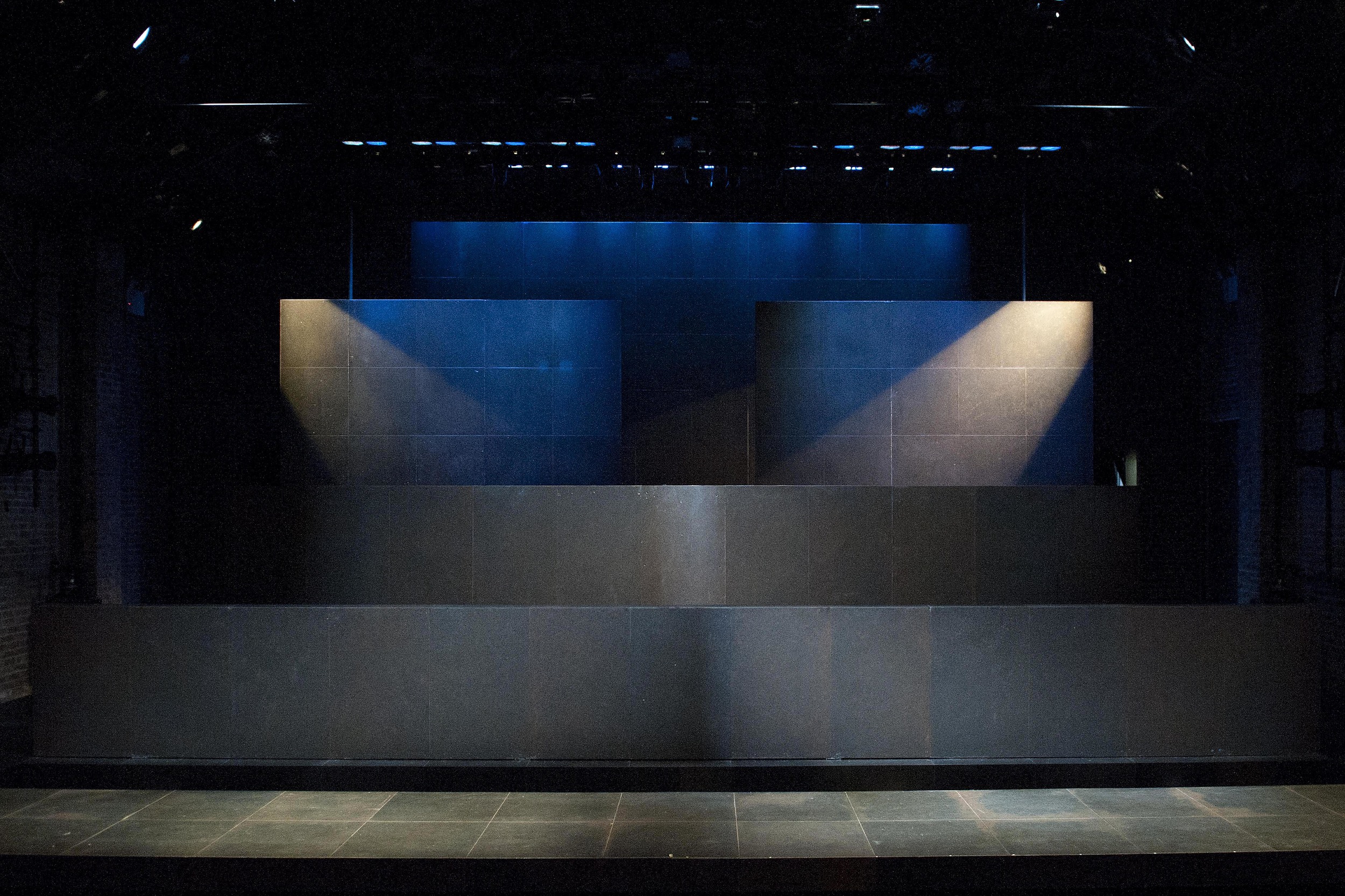"Do you like the curtains? Well so do I!" Photo credit: Joan Marcus. Courtesy Boneau, Bryan Brown.
The current revival of Cat On A Hot Tin Roof is not, in my opinion, as bad as the critics think. While I found the mishmash of Southern accents and off-stage servants' chorus distracting, I also found a lot to like with this lush, not-terribly-subtle production. Mostly, I loved the set—a dreamy fantasy of life in the aristocratic south whose soaring windows wouldn't feel out of place at the Met Opera. Some critics complained that the massive space distracted from the intimacy that is at the play's heart, but to them I blow a raspberry. The set was gorgeous—it was the directing (and sound design) that's caused the play problems.
This morning, I spoke to designer Christopher Oram, the genial Englishman responsible for the play's scenery. He had a lot of interesting stuff to say, and got quite passionate when I asked him about the choice, in previews, to experiment with having the ghost of Brick's friend Skipper lurk about on stage.
There was a lot of anger about it. It was anger! There was something vile that man wrote, reporting hearsay, but it created such a riot, an absolute riot, and after that it became very hard. A dozen reviews mentioned it, even though it wasn’t in the version of the play they saw. It became a bit of industry gossip, baggage those reviewers brought in when they saw the play.
The point is, Skipper is in the play. He’s mentioned constantly. He’s the third part of the triangle. Having him there really helped Scarlett and Ben [Walker, who plays Brick] establish the weirdness of their relationship. The removal of it didn’t change their relationship.
I’m saddened that one isn’t allowed to experiment. If we’d done it on opening night and it had been removed and we’d gotten the flak, then fair enough. But isn’t that the point of previews? With the Internet, literally the first performance becomes public property. This also makes the critics slightly redundant., if a critic brings that gossip, that baggage into the review.
As much fun as everyone had laughing at the idea of Skipper's ghost, I think there's something to like about a big-budget production having the good sense to admit it was wrong before opening night. No sense punishing a show that's already admitted a mistake.
Read the rest of the interview here. It's a good one.

